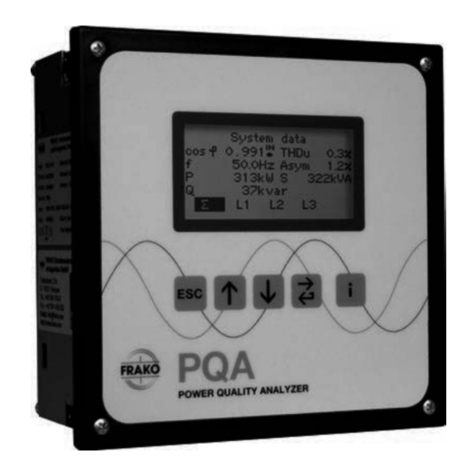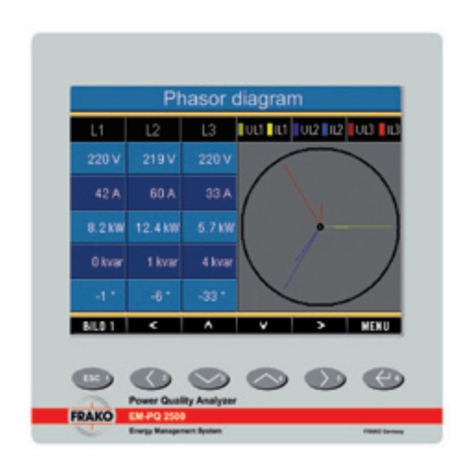2
Contents
Figures.................................................................................................................................................... 4
1. Safety.............................................................................................................................................. 5
1.1 Objective........................................................................................................................................ 5
1.1 Safety instructions ......................................................................................................................... 5
1.2 Intended use.................................................................................................................................. 5
1.3 Improper use ................................................................................................................................. 6
1.4 Repair............................................................................................................................................ 6
1.5 Symbols used................................................................................................................................ 6
2. Technical data................................................................................................................................ 7
3. Instrument description................................................................................................................ 10
3.1 Connections................................................................................................................................. 10
3.2 LEDs............................................................................................................................................ 10
4. Mounting the instrument ............................................................................................................ 11
4.1 Suitable location .......................................................................................................................... 11
4.2 Installing the instrument............................................................................................................... 11
5. Installation.................................................................................................................................... 12
5.1 Electrical connections.................................................................................................................. 12
5.1.1 Instrument power supply .......................................................................................................... 15
5.1.2 Measurement connections ....................................................................................................... 15
5.1.2.1 Voltage measurement ........................................................................................................... 15
5.1.2.2 Current measurements.......................................................................................................... 16
5.1.3 Ethernet connection.................................................................................................................. 18
5.1.4 Connecting to the FRAKO Starkstrombus®, alternatively Modbus.......................................... 18
5.1.5 Display bus............................................................................................................................... 19
5.1.5.1 Requirements for the bus cabling.......................................................................................... 20
5.1.5.2 Cable types............................................................................................................................ 20
5.1.5.3 Number of devices on the Display bus.................................................................................. 21
5.1.5.4 Terminating resistors............................................................................................................. 21
5.1.6 Digital OUT 1/2......................................................................................................................... 21
5.1.7 Analog OUT 1/2........................................................................................................................ 21
5.1.8 Digital IN 1/2, Trigger IN, tariff switching.................................................................................. 21
5.1.9 Temperature IN ........................................................................................................................ 22
5.1.10 Alarm ...................................................................................................................................... 22
6. Commissioning (initial start-up) ................................................................................................ 23
6.1 Safety precautions before start-up.............................................................................................. 23
6.2 Functional checkout..................................................................................................................... 23
6.3 Configuration switches (DIP switches)........................................................................................ 23
6.3.1 Functions of the DIP switches.................................................................................................. 23
6.3.2 DHCP options........................................................................................................................... 24
6.3.3 Fixed network IP address......................................................................................................... 24
6.3.4 Mode of the RS-485 interface .................................................................................................. 24
6.4 Terminating resistors on the Display bus .................................................................................... 24
6.4.1 Activating the terminating resistor in the EM-FD 2500............................................................. 25
6.4.2 Activating the terminating resistors in other devices................................................................ 25
6.4.3 Address assignment................................................................................................................. 25
6.5 Installation of the FRAKO software Device Manager.................................................................. 25
6.5.1 IT requirements ........................................................................................................................ 25
6.5.2 Installation ................................................................................................................................ 26
6.5.3 Configuration of the EM-PQ 2300............................................................................................ 26
7. Configuration ............................................................................................................................... 26
7.1 Address assignment.................................................................................................................... 26
7.1.1 Ethernet.................................................................................................................................... 26
7.1.1.1 Default values for network setting ......................................................................................... 26
7.1.1.2 Configuration of the network setting...................................................................................... 26
7.1.1.2.1 Setting the IP address on the EM-FD 2500 Display instrument......................................... 26






























